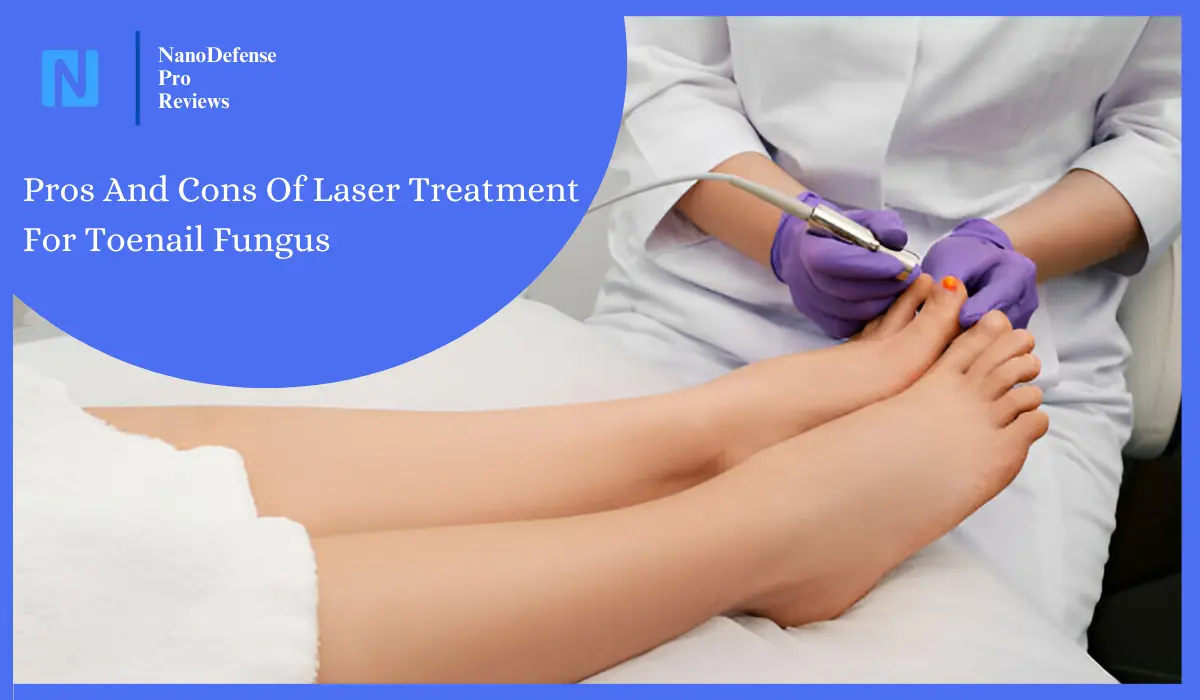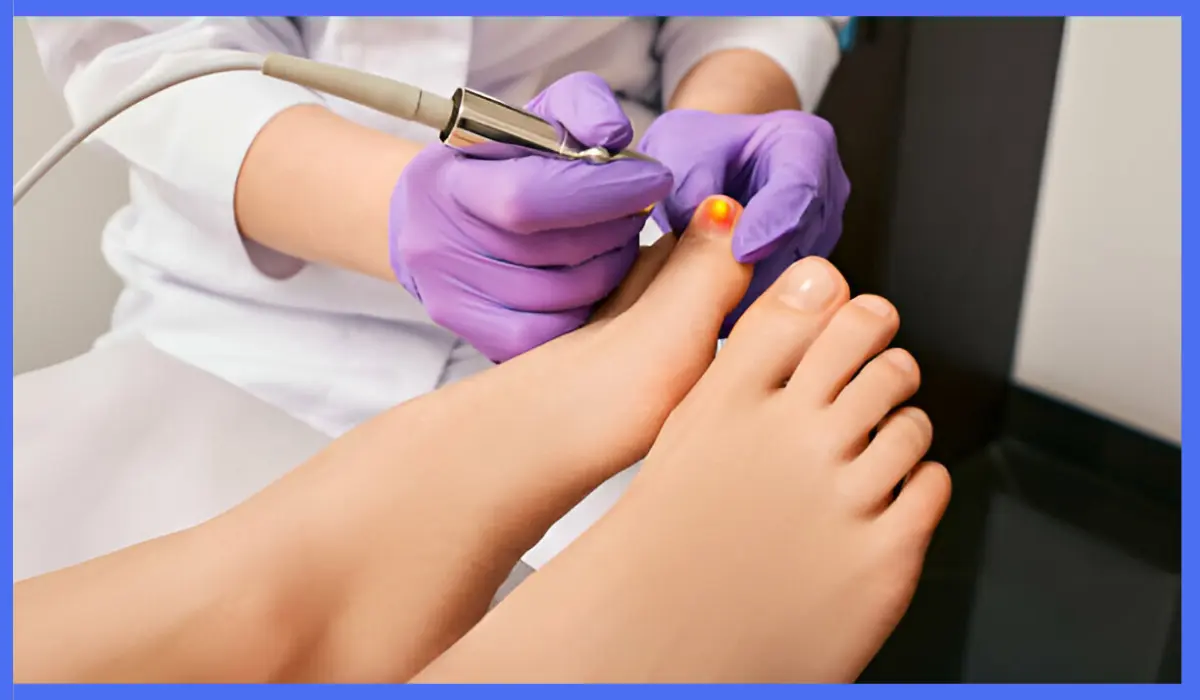Pros And Cons Of Laser Treatment For Toenail Fungus: Is It Worth The Shine?
Learn the pros and cons of laser treatment for toenail fungus. Unveil how this innovative approach offers quick results and minimal invasiveness, potentially eradicating stubborn fungal infections effectively. Delve into its drawbacks, such as the possibility of mild discomfort and the necessity for multiple sessions. Make an informed decision about whether laser treatment aligns with your preferences and needs for combating toenail fungus.

Disclaimer: This article has been generated with the assistance of AI tools. While our research team has fact-checked the content, readers should independently verify information for accuracy and reliability.
Toenail fungus, also known as onychomycosis, is a common and persistent problem that affects millions of people worldwide. The condition can cause the nails to become thick, discolored, and brittle, leading to pain, embarrassment, and difficulty with daily activities. Traditional treatments, such as topical antifungal creams and oral medications, have had limited success, often requiring long-term use and potentially causing side effects.
In recent years, laser treatment has emerged as a promising alternative for the treatment of toenail fungus. Laser therapy uses focused beams of light to target and destroy the fungal infection, offering a more effective and convenient solution. However, as with any medical procedure, there are both advantages and disadvantages to consider when deciding if laser treatment is the right choice.
What Is Laser Treatment For Toenail Fungus?

Laser treatment has emerged as an effective option for addressing toenail fungus. The procedure uses focused light to target and destroy the fungal infection, often achieving success rates ranging from 70-80%. Compared to traditional therapies, laser treatment offers faster results, minimal side effects, and improved cosmetic appearance. However, the treatment can be more expensive, and long-term data is limited.
Additionally, there is a risk of recurrence if underlying issues are not addressed. Patients should carefully weigh the pros and cons with their healthcare provider to determine if laser treatment is the right choice for their specific case. Overall, it presents a promising alternative for managing this persistent condition.
Related: The Dangers Of Black Toenail Fungus And How To Effectively Eliminate It
Pros Of Laser Treatment for Toenail Fungus
- Improved Efficacy: Numerous studies have shown that laser treatment for toenail fungus can be highly effective, with success rates often ranging from 70% to 80% or higher. The laser light penetrates the nail and the underlying nail bed, effectively killing the fungal organisms and preventing their recurrence.
- Faster Results: Laser treatment typically produces faster results compared to traditional topical or oral antifungal medications. Patients may see visible improvements in the appearance of their nails in as little as 3-4 months, with the full treatment process taking around 6-12 months.
- Minimal Side Effects: Laser therapy is generally considered a safe and well-tolerated procedure, with very few reported side effects. Patients may experience some temporary discomfort or redness in the treated area, but these typically resolve quickly.
- Convenience: Laser treatment is a relatively quick and straightforward procedure, often taking less than an hour to complete. Patients can typically resume their normal activities immediately after the treatment, making it a convenient option for those with busy schedules.
- Improved Cosmetic Appearance: As the fungus is eliminated, the nails begin to grow back clear and healthy, restoring the natural appearance of the toes and improving overall foot aesthetics.
Related: Toothpaste For Toenail Fungus: Does It Really Work?
Cons Of Laser Treatment for Toenail Fungus
- Cost: The cost of laser treatment for toenail fungus can be more expensive than traditional therapies, with the cost ranging from several hundred to several thousand dollars per treatment, depending on the number of nails involved and the location of the clinic.
- Potential for Recurrence: While laser treatment can be highly effective, there is still a risk of the fungus returning, especially if the underlying cause of the infection is not addressed. Proper foot hygiene and keeping the feet dry are essential to prevent reinfection.
- Limited Long-Term Data: Laser treatment for toenail fungus is a relatively new therapy and long-term studies on its effectiveness and safety are still limited. Some patients may be hesitant to undergo a procedure with a lack of extensive research on its long-term outcomes.
- Temporary Discomfort: While laser treatment is generally well-tolerated, some patients may experience temporary discomfort or pain during the procedure, particularly if multiple nails are being treated.
- Insurance Coverage: Many insurance providers do not currently cover the cost of laser treatment for toenail fungus, as it is still considered a cosmetic or elective procedure in some cases. Patients may need to pay the full cost out of pocket.
Related: How To Get Rid Of Toenail Fungus Naturally: 8 Proven Home Remedies
Bottom line
When considering laser treatment for toenail fungus, it is important to weigh the potential benefits against the drawbacks and discuss the option thoroughly with a qualified podiatrist or dermatologist. Factors such as the severity of the infection, the patient’s overall health, and the availability of financial resources should all be taken into account. By understanding the pros and cons of this treatment, patients can make an informed decision that best suits their individual needs and preferences.

Lisa Miller
Dr. Lisa Miller is a board-certified Dermatologist with over 15 years of experience treating a wide range of skin, hair, and nail conditions. She received her medical degree from the prestigious Columbia University College of Physicians and Surgeons and completed her dermatology residency at the University of California, San Francisco, one of the top dermatology training programs in the country. Dr. Miller is an active member of the American Academy of Dermatology and has authored numerous peer-reviewed articles and book chapters on the latest advancements in dermatological care. She is frequently invited to speak at national and international medical conferences, sharing her expertise with other clinicians. In her private practice, Dr. Miller takes a patient-centered approach, collaborating closely with each individual to develop customized treatment plans. She is passionate about empowering her patients to achieve optimal skin, hair, and nail health through a combination of the latest medical therapies and lifestyle recommendations.
